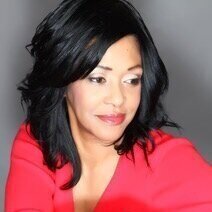By Pauline Lewis
When we scour the shopping centres today, we are spoilt for choice with the array of make-up brands available. Brands are wide and various, offering us so many choices of sizes, colours, and quality that we can often become overwhelmed by what is on offer.
However, this can sometimes not quite be the case when it comes to BAME makeup. Make-up has evolved generally and really has grown up, but make-up for women of colour is sometimes found to be a few shades behind.
The reason might lie in the history. The first time Immigration into the UK began in any significant numbers was during the 1950’s and 60’s. At that time the world was a very different place. The UK was the head of a much larger Commonwealth than today. Many countries who were former colonies had not yet claimed independence from the UK, whilst countries such as Ghana, India, Jamaica, Mauritius, Nigeria, Zambia, and many more gained their independence around that time. The make-up industry had been designed to serve a market which did not include women of colour. ‘Barbie’ and ‘Cindy’ dolls were white skinned and blonde or brunette. All of these factors led to there being a status quo and stereotype of what “beauty” was defined as. That definition did not include women of colour and this was reflected in the make-up counters around the UK.
The good news was that brands started to come through that catered for darker skins. One of the earliest brands available in the UK was Flori Roberts, an early US brand. This was swiftly followed by US brand Fashion Fair. For the first time there was a mainstream brand taking space in concessions around the UK alongside the more established mainstream brands such as Chanel, Revlon, Estee Lauder, Max Factor, and Rimmel. This was an exciting time for women of colour, and many other beauty industry benefits began to follow. In keeping with economic trends, competition ensued in the form of other mainstream companies bringing out makeup ranges aimed at diverse women.
Revlon launched a range for women of colour, expanding their range of foundation colours to suit darker skins for the first time, which led to a steady climb in women of colour “firsts”. According to research, in 1970, Revlon became the first cosmetics company to feature a woman of colour, Naomi Sims, whilst Beverly Johnson became the first Black woman to feature on the cover of Vogue magazine. These ‘firsts’ opened the door for models such as Tyra Banks and Naomi Campbell to become leaders in the fashion and beauty industry. We have also seen other industries benefitting. The actress Lopita Nyongo became the first woman of colour to feature for beauty brand Lancome in 2014, and former Miss World Pryantha Chopra endorsed beauty brand, Obagi in 2019.
The result of these milestones was that the cosmetics counter changed. In the old days only cosmetics that supported the stereotype image of beauty were to be found. Barbie was the archetypal stereotype and everyone, regardless of their own colour, was expected to use her colours. Light Brown to Dark skinned women were wearing pale pink lipsticks and American Tan tights. When the former US First Lady Michelle Obama asked for a gown to wear to meet the Indian Prime Minister in 2010, she was offered a gown described as the colour ‘nude’. This sparked a controversy about what ‘nude’ or ‘flesh coloured’ really meant. Little girls from immigrant communities across the UK were introduced to Barbie with the message that she was the ideal to aim for. The message was universally reinforced with school paint palettes referring to the beige paint as ‘flesh’ coloured, and almost all leading ladies on TV being blonde including children’s cartoons.
Today, we have brands who cater exclusively for women of colour, the leading ones being Fenty, Bobbi Brown, Mac and Nars. We also have brands who cater for all skin colour including Revlon, Rimmel, Dior, Covergirl, Lush Makeup, Estee Lauder and Yves Saint Laurent. The landscape looks much better than it was. Despite our great progress, obtained at great cost to those who have been the change makers, we still need to aspire to equal consideration for the needs of all. This must include women of colour to the same extent as everyone else. We all need to aim to reach a goal where not just women of colour are the ones who complain about finding the right shade or colours. We all need to be in the same place, with everyone catering for everyone.






